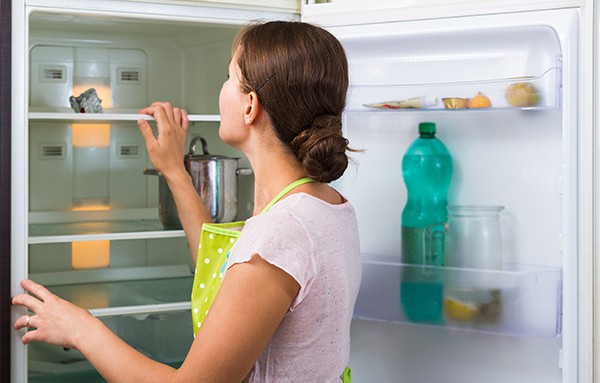
Is your KitchenAid refrigerator not cooling properly? Are you tired of the constant buzzing or leaking water? Before you rush to call a professional Wolf refrigerator repair technician, consider giving your fridge a DIY renovation. With some basic tools and know-how, you can troubleshoot and fix common issues, saving time and money in the process.
Common Issues with KitchenAid Refrigerators
Refrigerator Not Cooling
One of the most common problems with refrigerators is inadequate cooling. If you notice that your fridge isn’t keeping your food cold enough, it could be due to various factors such as a dirty condenser coil, malfunctioning thermostat, or blocked vents.
Ice Maker Malfunction
If your ice maker is not producing ice or is dispensing it irregularly, there might be an issue with the water supply, inlet valve, or ice maker assembly. Troubleshooting these components can often resolve the problem without professional help.
Strange Noises
Unusual noises like buzzing, rattling, or clicking coming from your refrigerator can indicate issues with the compressor, evaporator fan, or condenser fan motor. Identifying and addressing the source of the noise promptly can prevent further damage.
Leaking Water
Water pooling underneath or inside your refrigerator is a sign of a leak, which can be caused by a clogged defrost drain, damaged water inlet valve, or cracked water line. Finding and fixing the source of the leak is crucial to prevent water damage to your kitchen.
DIY Repair Tips
Cleaning the Condenser Coils
Dirty condenser coils can hinder heat dissipation, leading to poor cooling performance. Regularly cleaning the coils with a vacuum cleaner or brush can improve efficiency and prolong the lifespan of your refrigerator.
Checking the Door Seals
Faulty door seals allow cold air to escape, making your refrigerator work harder to maintain the desired temperature. Inspect the seals for signs of wear or damage, and replace them if necessary to ensure a proper seal.
Defrosting the Freezer
Excessive frost buildup in the freezer can obstruct airflow and prevent proper cooling. Defrosting the freezer regularly and removing any accumulated ice can restore optimal performance.
Troubleshooting the Ice Maker
If your ice maker is acting up, check the water supply line, inlet valve, and ice maker assembly for any blockages or malfunctions. Resetting the ice maker or adjusting the water pressure may also help resolve issues.
Addressing Unusual Noises
Identifying the source of strange noises and addressing them promptly can prevent further damage to your refrigerator. Inspect the compressor, evaporator fan, and condenser fan motor for signs of wear or malfunction, and replace any faulty components as needed.
Fixing Water Leaks
Locating and fixing water leaks promptly is essential to prevent water damage to your kitchen. Check the defrost drain, water inlet valve, and water line for any blockages or damage, and repair or replace the affected parts accordingly.
Tools and Materials Needed
Before starting any DIY repairs on your KitchenAid refrigerator, gather the following tools and materials:
- Vacuum cleaner or brush
- Screwdriver set
- Multimeter
- Replacement parts (if needed)
- Towels or rags
- Warm, soapy water
Step-by-Step Repair Guide
- Turn Off the Power: Unplug your refrigerator or turn off the power at the circuit breaker before performing any repairs.
- Identify the Problem: Diagnose the issue by observing the symptoms and conducting basic troubleshooting.
- Gather Tools and Materials: Collect the necessary tools and replacement parts for the repair.
- Follow Safety Precautions: Wear protective gear and exercise caution when working with electrical components.
- Perform the Repair: Follow the step-by-step instructions for addressing the specific issue with your refrigerator.
- Test the Appliance: After completing the repair, plug in the refrigerator and monitor its performance to ensure the problem is resolved.
Safety Precautions
- Always unplug the refrigerator before performing any repairs to avoid the risk of electric shock.
- Use caution when handling sharp tools or working with electrical components.
- If you’re unsure about a repair or feel uncomfortable, seek professional assistance.
With the right knowledge and tools, DIY fridge restoration is both feasible and cost-effective. By addressing common issues like cooling problems, ice maker malfunctions, strange noises, and water leaks, you can extend the lifespan of your KitchenAid refrigerator and keep it running smoothly for years to come.
Why Choose Us?
Our team of experienced technicians here at KitchenAid Appliance Repair Professionals specializes in KitchenAid refrigerator repairs, providing reliable solutions to ensure your appliance functions optimally. With prompt service and attention to detail, we strive to exceed your expectations and deliver lasting results.
FAQs
Can I repair my KitchenAid refrigerator myself?
- Yes, many common refrigerator issues can be resolved with DIY repairs, but it’s essential to follow safety precautions and know your limitations.
How often should I clean the condenser coils?
- Aim to clean the condenser coils at least once or twice a year to maintain optimal performance.
Why is my refrigerator making loud noises?
- Loud noises can indicate issues with the compressor, fans, or other components that may require repair or replacement.
What should I do if my ice maker stops working?
- Check the water supply, inlet valve, and ice maker assembly for any blockages or malfunctions, and troubleshoot accordingly.
Is it worth repairing an older refrigerator?
- It depends on the extent of the damage and the cost of repairs compared to the price of a new appliance. Consider factors like energy efficiency and the lifespan of the refrigerator before making a decision.
Call us now to schedule your KitchenAid refrigerator repair and experience unparalleled service!
